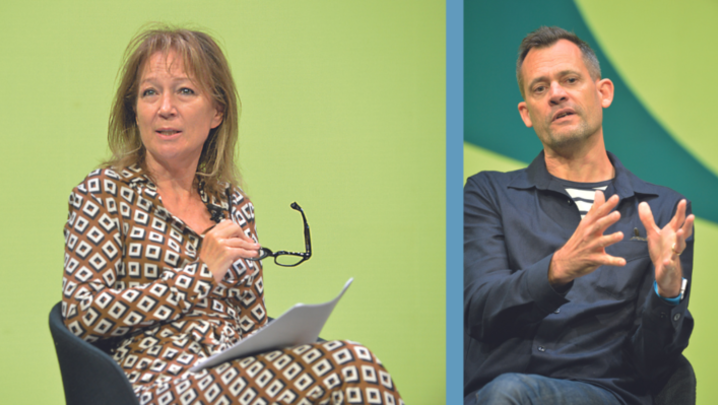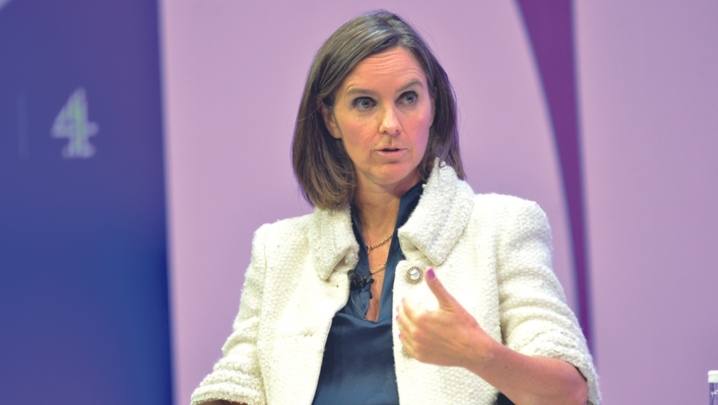Michael Wolff likes to pick a fight. So how come he is praising traditional TV networks in his latest book? If only it were that simple, discovers Simon Shaps
Some years ago, when The Guardian hosted a supper at the Edinburgh International Television Festival, there was an unfamiliar face sitting among the executive classes.
It should be said that, over the years, this event has been notable for a number of spectacular rows. And, in the interests of transparency, I have to admit that I was responsible for one of the worst, when I asked Luke Johnson, then Chair of Channel 4, what a “pizza maker” like him knew about television.
This bear pit should have been a perfect place for Michael Wolff to opine about television. Wolff is a bruiser. The New York Times, in its review of Television Is the New Television, writes: “Mr Wolff’s studied unpleasantness has emerged as a brand of sorts.” James Murdoch once called him “an obnoxious dickhead”.
Wolff’s targets over many years, in many different publications, have ranged from the flaky digital businesses that launched in the years before the dotcom crash at the turn of the century, to Rupert Murdoch, Tina Brown and, more recently, The Guardian, his host that night and a paper he contributed to for more than a decade.
Writing for GQ magazine in 2014, he poured cold water on the paper’s US ambitions in his trademark style. He said that The Guardian had a “kind of spunky or wildly speculative confidence that it could become an American voice”, but there was no way for it to make any money by doing so, Pulitzer Prize notwithstanding.
An entire week of YouTube is worth about as much to major advertisers as a single, first-run episode of The Big Bang Theory
So his relative silence that night in Edinburgh was a surprise and something of a missed opportunity. His sceptical intelligence, his understanding of the complex ecosystem of US media and, above all, his capacity to pick a fight, arguing some outrageously contrarian position, make him the perfect dinner guest at media gatherings.
In this latest assault, Wolff’s target is not television, but, in something of a rerun of his earlier book Burn Rate, the latest generation of what he sees as flaky digital businesses – BuzzFeed and Vice included. His charge against these businesses is that their ability to attract traffic is in inverse proportion to their ability to attract revenue.
Wolff argues that they are locked into a deathly spiral of low-grade content and poor ad rates. His heroes today are not from Silicon Valley, but Hollywood, with CBS CEO Les Moonves his prize exhibit. Wolff argues that Moonves has “reinvented broadcast television”, turning a “lagging business” into a “growth industry”.
Although viewers may have missed this reinvention, Wall Street hasn’t. In 2005, when Viacom split into two companies, CBS – comprising the broadcast network, alongside Showtime and joint-venture The CW – was deemed to be the less exciting set of assets and poorly positioned for growth.
Today, CBS is worth more than the combination of businesses now sitting under the Viacom umbrella: MTV, VH1, Comedy Central and Nickelodeon, to name but four.
This hasn’t been achieved by a dramatic increase in audiences or advertising revenue for his channels, but largely through a set of bloody negotiations for higher retransmission fees from cable operators.
More broadly, what Wolff argues is that traditional US television businesses that were thought to be threatened by digital disruptors have proved to be astonishingly resilient. At the same time, many of the digital disruptors, not least those invested in by traditional media companies to head off this supposed threat, are built on sand.
It is not merely the windfall of higher retransmission fees that explains the resilience of the traditional broadcasters. Wolff quotes an analyst at the investment bank RBC Capital Markets, who points out that an entire week of YouTube is worth about as much to major advertisers as a single, first-run episode of The Big Bang Theory.
The scarcity value of large audiences, even if those audiences are not quite as large as they used to be, trumps the aggregate value of hundreds of pieces of content, each one only delivering a relatively small number of viewers.
But television has protected its bottom line in other ways. In the US, television revenues from traditional broadcasters have diversified. Wolff writes: “From virtually 100% ad supported, television now gets half of its revenues from non-ad businesses – subscription, licensing, foreign sales.”
What is more, the linear channels at the heart of these businesses retain “a set of special, high-profile, one-time, real-time, can’t-avoid-the-ads events… in which advertising’s value, against the trends, continues to increase.”
To sum up, after lots of foolhardy investments in other stuff – radio, social media, shopping channels, data mining, sports franchises and all things “digital” – it turns out that the answer all along was television. “It was a curiously winding road for the television business to actually understand it was in the television business,” Wolff writes.
At this point in the argument – page 115 to be precise – executives in traditional broadcast organisations would be advised to put the book down, send a quick congratulatory email to Wolff (The Guardian can probably still supply contact details) and start counting their share options.
In fact, life, as Wolff implicitly acknowledges, is more complicated than that. If television executives have suddenly doubled down on television, then so, too, have many of the digital disruptors. “Digital convergence,” he writes, “turns out not so much to be about bringing computing to your television, but about bringing more television to your television.”
Suddenly, a number of well-funded digital companies, who TV executives thought were up to something completely different from them – something they craved, but didn’t entirely understand, even if their kids did – turn out to be fishing in the same pool for talent, original programming and premium sports rights. Amazon, Google, Apple and Netflix, now that they have woken up to the power of television in its simplest form – engrossing narrative offering great production values – are fearsome competitors for the best content, and for eyeballs, however that content is delivered.
In the UK, just when the broadcast landscape looked like it was settling down, competition has suddenly got significantly tougher.
Wolff’s arguments do not stretch to figuring out which of the incumbent television businesses here is best equipped to deal with these new competitive pressures.
Perhaps one answer is that, to survive, companies need to have diversified revenue streams across pay, advertising and production. This leaves the publisher-broadcasters particularly vulnerable.
Another answer might be that the question doesn’t really make sense any longer, as the UK’s television industry becomes more and more intertwined, across production and broadcasting, with the major US media companies.
And then there is the BBC. It still performs remarkably well but, as the twin pressures of increased competition and downward pressure on the licence fee begin to bite, the BBC may begin a dramatic decline, as its overwhelming dependency on a single revenue stream proves unsustainable.
Television Is the New Television points to an irony that has become apparent only in the past couple of years. The digerati and traditional television executives spent many years eyeing each other up, coveting what the other had.
As Wolff might have put it, the answer all along was: it’s television, stupid!







